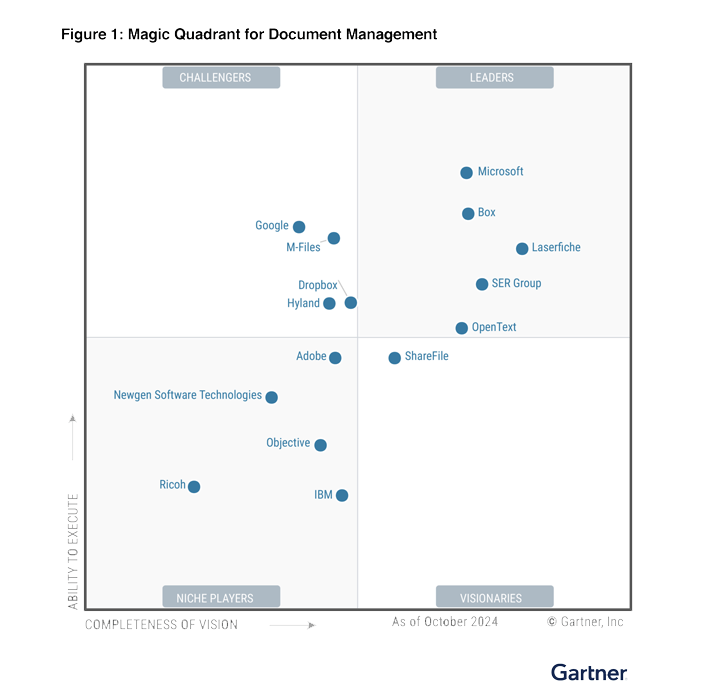The LA wildfires left behind more than just burned homes and scorched landscapes. They left thousands of residents waiting—waiting to rebuild, waiting for approvals, waiting for their lives to return to normal.
For local governments, the challenge is not about issuing permits; it’s about restoring hope and stability. And they need to do it as quickly as possible. But the traditional permitting process wasn’t designed for disasters. It’s slow, paper-heavy and frustrating for both officials and residents.
What if there was a way to cut through the backlog and get permits approved faster? Laserfiche is an industry-leading ECM platform that makes that possible.
When Every Day Counts
Imagine a homeowner who lost everything in the fire. They have insurance money ready, a contractor lined up and blueprints in hand. But before they can break ground, they need permits.
They submit their application, but local permitting offices are overwhelmed. Stacks of paperwork cover desks, phone lines are busy and approvals move at a snail’s pace. Weeks turn into months. Frustration builds.
Now, imagine a different scenario. The homeowner submits their permit online through a simple portal. The system automatically routes their application to the right department. Any missing information is flagged upfront. Officials review and approve it digitally, cutting out unnecessary back-and-forth. The homeowner gets their permit in days instead of weeks.
That’s the power of Laserfiche.
Make Permitting Faster and Easier
Laserfiche transforms outdated, manual permitting into a fast, automated process. This automation helps local governments do more with less and keep up with demand.
Digital Applications Instead of Paper Piles
Rather than requiring residents to stand in line at government offices, Laserfiche allows them to:
- Submit applications and supporting documents online.
- Track their permit status in real time.
- Receive digital approvals without having to visit multiple offices.
For government teams, this means fewer phone calls, fewer lost documents, and a smoother process from start to finish.
Streamline Workflows and Boost Efficiency with Automation After a wildfire, the volume of permit requests can overwhelm city staff. Laserfiche eliminates bottlenecks by:
- Automatically routing applications to the right people for review.
- Sending notifications when approvals are needed.
- Setting up reminders so permits don’t get stuck in the system.
This keeps things moving, reducing unnecessary delays and helping homeowners start rebuilding sooner.
Make Smarter Decisions with GIS
Rebuilding isn’t just about speed—it’s also about safety. Some areas may be too fire-prone to redevelop with standard building practices. Some properties may need extra environmental and safety reviews before construction can begin.
Laserfiche connects directly with Esri ArcGIS, allowing officials to:
- Link permits and inspection reports to real-time maps
- Identify high-risk zones and flag permits that need extra review
- Track rebuilding progress across the entire community
By combining permitting data with GIS mapping, governments can make informed, responsible decisions. These decisions can help protect communities and property owners from future disasters.
Keeping Up with FEMA and State Requirements
For local governments, disaster recovery isn’t just about issuing permit. It is about making sure everything is documented to receive state and federal funding.
Laserfiche simplifies compliance by:
- Storing all permit records in a centralized, searchable system
- Automatically tracking approvals, inspections, and changes
- Generating reports for FEMA and state agencies without digging through stacks of paper
This ensures local governments don’t miss out on critical funding due to missing paperwork or lost records.
Keep Communities Informed in the Recovery Process
For residents affected by wildfires or disaster, waiting for a permit can feel like waiting in the dark. When will their application be reviewed? Where does it stand in the process? What else do they need to provide?
Laserfiche helps keep communities informed by:
- Enabling residents to check their permit status via a public-facing portal.
- Making information easily accessible by streamlining public records requests.
- Improving collaboration between departments so everyone stays on the same page.
When people know what’s happening, trust in the process grows—and so does confidence in their local government.
Rebuilding Faster, Together
The wildfires may have destroyed homes, but they didn’t destroy the spirit of the communities they touched. Local governments have the power to clear the way for faster rebuilding—and Laserfiche can help.
With content management, automated approvals, GIS integration, and better compliance tools, cities and counties can:
- Reduce permit approval times from weeks to days.
- Prevent paperwork delays and lost documents.
- Ensure compliance with FEMA and state regulations.
- Speed up inspections and safe rebuilding efforts.
- Improve communication and transparency for residents.
For families and business owners eager to rebuild, every day matters. The faster the permits are issued, the sooner construction begins, and the sooner life can return to normal.
Let’s Get Started
If your city or county is struggling with permitting delays after the wildfires, Laserfiche can help. Contact us today to see how our automation and workflow solutions can support your recovery efforts. See why Laserfiche is a Leader:
